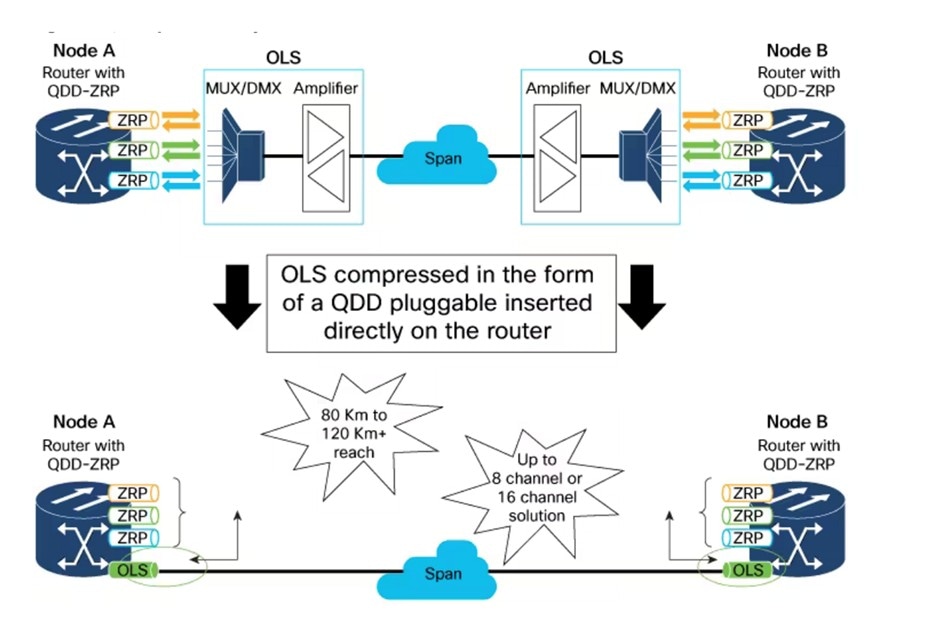400G Digital Coherent Optics Overview
Coherent optics uses phase and amplitude to encode data, unlike PAM4 optics (Pulse amplitude modulation) which only uses amplitude. This allows coherent optics to be more resistant to noise and support long-haul distance transmission.
For more information on Cisco 400G Digital Coherent Optics, see Cisco 400G Digital Coherent Optics QSFP-DD Optical Modules Data Sheet.
There are two variants of 400G Digital Coherent Optics.
-
ZR variant: The QSFP-DD ZR variant complies with OIF MSA, allowing to provide compatibility with the equivalent component compliant with the same MSA standard. The key application for the ZR standard is allowing the transmission of a 400G wavelength in point-to-point topology up to a distance of 120 km.
-
ZR Plus variant: The QSFP-DD OpenZR+ module complies with the OpenZR+ MSA. ZR+ pluggable coherent optics support regional to long-haul transmission of wavelengths with multiple amplification sites between endpoints. ZR+ supports multiple configuration options in terms of modulation scheme, shaping, and baud rates to support different network topologies and allows longest transmission distance (> 120 km).


 Feedback
Feedback